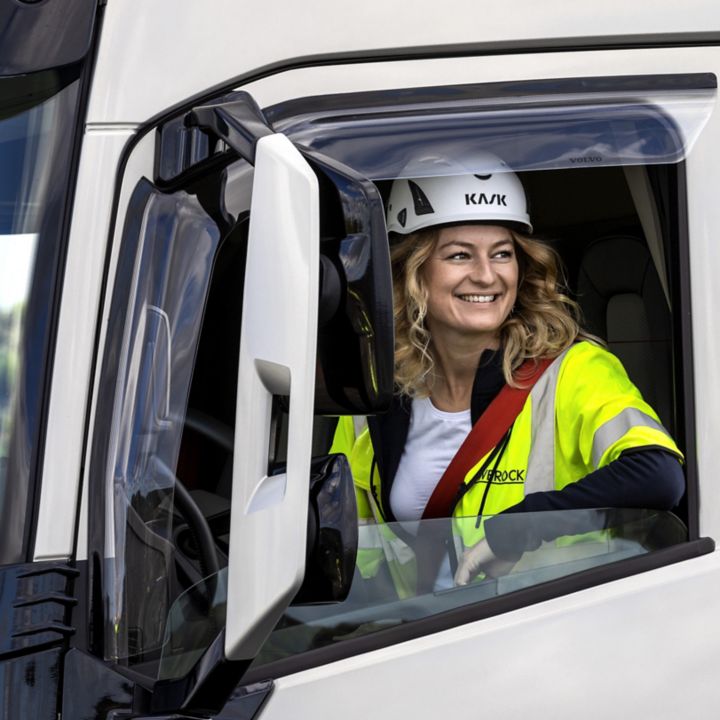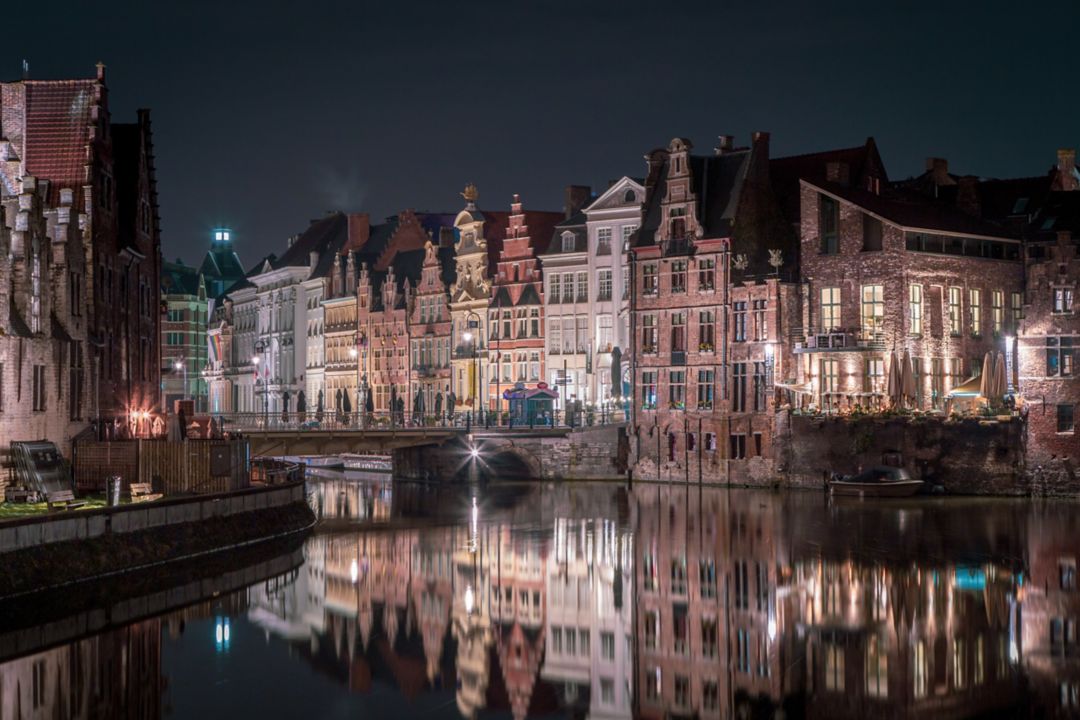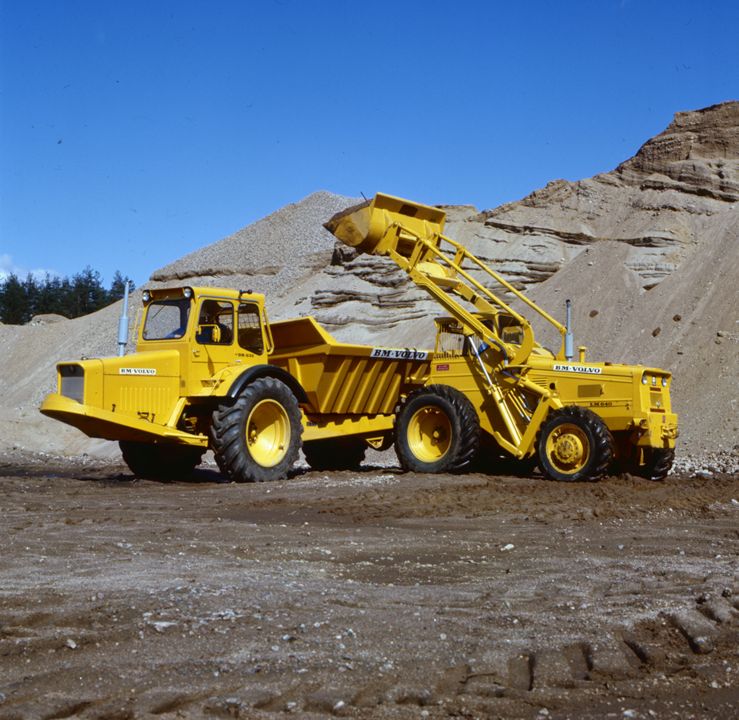More stories from the archive
The very first Volvo vehicle
Here comes Jakob, the very first series-manufactured Volvo car. It was just before 10 am on Thursday April 14, 1927, when Hilmer Johansson drove out through the factory gates in Lundby, Gothenburg, Sweden. The car and driver were slightly late, as, embarrassingly enough, the car was initially unwilling to go forwards! It emerged that the pinion in the rear axle had been fitted upside down. The moment this was rectified, the car rolled out of the plant as planned.
The press was enthusiastic about the new Swedish car, but it was not a sales success. Only 205 cars in the ÖV4 Series, the actual name of the vehicle, were produced. Volvo also soon began experimenting with building a truck, with the same engine and gearbox. In 1928, LV Series 1, the first Volvo truck, was presented, as well as the first Volvo bus.
Electric pioneers back in 1924
Today, electric vehicles are seen as the future of the transportation industry, but the concept is far from new. In fact, as far back as 1924, Berliet – the predecessor of today’s Renault Trucks – was producing an electric van that could deliver a payload of 300 kg, four horsepower and a top speed of 26 kmh. The electric engine was powered by a 225 amp-hour battery and could travel around 80 kilometers before needing to be recharged.
The model depicted here was originally used as a hearse. Since its electric engine produced no exhaust and low noise, the vehicle was perfect for slow-moving funeral processions. It is now owned by the Berliet Foundation and is currently on display at Renault Trucks’ headquarters in Lyon, France.
In 1928 the first ever Volvo truck was produced
The series 1, the first ever truck manufactured by Volvo, rolled off the production line in Gothenburg, Sweden 90 years ago. It had a four-cylinder engine, 28 bhp and a payload limit of 1,500kg.
Back then, Volvo was a newly formed company that had only started manufacturing cars the previous year. It decided to move into the truck segment after realizing that the market lacked a vehicle that could handle the harsh Swedish climate and poor road conditions. The new Series 1, with its simple but highly functional design, delivered a level of quality and reliability that was unmatched by non-Swedish trucks. The first 500 units sold so quickly, a second batch of 500 – Series 2 – was manufactured shortly afterwards.
The Mack Manhattan
Did you know that the first vehicle to carry the Mack nameplate was a sightseeing bus? The 13-passenger bus served a tour company in Prospect Park in Brooklyn for eight years at the beginning of the 1900s. Eventually, the bus was converted into a truck and it covered more than one million miles before retiring in 1923.
The Mack brothers – John (”Jack”), Augustus (”Gus”) and William – started as makers of horse-drawn wagons in Brooklyn. Looking for more space, they moved their manufacturing from Brooklyn to Allentown, Pennsylvania, in 1905. To differentiate the buses from the wagons, they were produced under the “Manhattan” trade name. The Mack brothers soon began building delivery trucks on the bus chassis, powered by 50-horsepower Mack engines.
‘Built like a Mack’
Produced between 1953 and 1966, Mack Trucks’ B Series remains one of its most successful heavy truck ranges in its history. Its combination of power, reliability and fuel economy set new standards in the US trucking industry. Externally, its distinctive rounded cab stood in stark contrast to the box-like designs of other models.
The B-Series covered a broad range of weight classes and powertrains, which made it incredibly versatile and easily adaptable to many different applications. However, the longest lasting legacy of the B Series is the motto from its promotional campaign: ‘Built like a Mack’. The slogan is still used on Mack Trucks’ T-shirts and memorabilia and it has even become a common expression in the American lexicon, to describe something that is highly robust and reliable.
From agricultural and forestry machines to construction machines
Final check and filling up with fluids on a Volvo-BM Boxer 350 tractor on the Bolinder-Munktell assembly line in Eskilstuna, Sweden, in the mid-1960s. The Boxer 350 saw the introduction of a totally new driveline. It was robust and resilient and was therefore also used in wheel loaders, haulers and backhoe loaders. A total of 28,439 Boxers were produced between 1959 and 1967.
In 1973, the company name changed to Volvo BM AB in order to strengthen the Volvo identity and reinforce the focus on construction equipment. Four years later, the company decided to completely abandon the agricultural and forestry sectors and only concentrate on construction machines. During the years that followed, some of the best machines ever made by Volvo were put to work on construction sites around the world. Since 1995, the company has been known as Volvo Construction Equipment. The suffix “BM” was included in the product brand name until the end of the 1990s.
Bringing turbo to trucks
On its release in 1951, the L395 Titan was Volvo Trucks’ largest truck to date, but Volvo’s engineers wanted to increase engine output even further without significantly increasing weight or fuel consumption. The answer was turbo technology, which at the time was only used in ships, locomotives and aircraft.
Volvo Trucks was the first manufacturer to design a turbocharger small enough to fit under the bonnet of a truck, which increased output by 35 bhp (150 to 185 bph) while only adding 25kg. This led to the launch of the L395 Titan Turbo in 1954. Following its success, turbo engines were introduced for small and medium trucks as well, while competitors rushed to catch up. Soon it became the industry standard, with Volvo Trucks producing its last non-turbocharged truck in 1980.
The Lyon site – more than 100 years old
Cradle of the Renault Trucks brand and steeped in history, the Lyon site celebrated 100 years in 2016. Between 1916 and 1917 Marius Berliet built an industrial complex in Lyon spanning the districts of Saint-Priest and Vénissieux. The site consisted of immense buildings, separated by wide avenues, set up in a logical flow to supply assembly lines. It covered an area of almost 400 hectares. From 1916, the site supported the assembly of almost 15,000 CBA trucks delivered to the French Army during World War I.
In the 1930s, a new wave of construction gave rise to large offices for administrative activities. After World War II, the site continued to grow. By 1974, the 24,000 trucks manufactured by Berliet made up half the French production and almost 60 per cent of the company’s employees worked at the Lyon site. Today, the site with its 4,000 employees is a reputed centre of excellence in several technical areas such as engine development and hybrid technology.
More than 160 years of history of the Köping plant
In 1856 Köpings Mekaniska Verkstad (Köping’s Engineering Workshop) was founded by Otto G Hallström in Köping, Sweden. The company primarily produced machine tools, such as lathes, drilling machines and milling machines. Its largest customers included railway workshops and gun factories. In 1926 AB Volvo, a recently established company, placed its first order for gearboxes with Köpings Mekaniska Verkstad. The following year, Volvo launched its first car.
In 1930, with its production of both cars and trucks, Volvo quickly became an important customer for Köpings Mekaniska Verkstad. This photo shows the production of gearboxes in 1930. In 1942 Köpings Mekaniska Verkstad became part of Volvo. In 2016 the plant celebrated its 160th anniversary. Group Truck Operations Powertrain Production in Köping has some 1,500 employees who machines and assembles transmissions for Volvo trucks, buses and haulers. The plant also produces marine drives for Volvo Penta and supplies the Volvo Group’s plants in North and South America with transmission components.
The Skövde factory produced its first engine in 1907
Today, the Skövde plant in Sweden is a worldclass production facility supplying Volvo Group with diesel engines and components. The main processes are casting, machining and assembly. The entire engine plant has some 2,800 employees.
The assembly factory stood ready in 1975. The history of the Skövde plant, however, dates back all the way to 1868. John G Grönvall started Sköfvde foundry and mechanical workshop that year and up until 1907 the main products were frame saws, iron stoves and turbines. The first engine was produced in 1907. During the 1920s, Volvo became an important customer and in 1935 AB Volvo bought its own engine production factory. The construction work of a new engine assembly factory started in 1973 and took two years to complete.
Today this is part of the Group Trucks Operations Powertrain Production plant in Skövde. In October 1975 the assembly factory F was ready to produce engines at an annual capacity of 60,000 units per year. Today’s assembling at the F-factory consists of the HDE13 and HDE16 engines.
130 years of dedication and commitment at the Arvika plant
The Arvika plant in Sweden has a truly fascinating history. It began life as a small forge back in 1885 and has grown to become Volvo Group’s principal plant for the production of wheel loaders. The Arvika plant is situated deep in a Swedish forest, far away from large cities with their abundance of transport facilities and workers. So how has it been so successful? The answer is simple: people with drive who have dared to think outside the box.
The company’s founder, Per Andersson, was an innovator with a great head for business. After starting by selling uncomplicated ploughs, he moved on to produce castings and mowing machines. In 1898, a contract to sell 2,500 mowing machines a year was signed with a dealer. The reputation of these Swedish machines quickly spread abroad and with customers in South Africa, Australia and South America, the Arvika Plant’s turnover skyrocketed. Just before the start of World War II, the company had more than 700 employees, annual sales of 15,000 agricultural machines and a site with an area of 280,000 square metres.
In 1960, the company was acquired by AB Bolinder-Munktell in Eskilstuna. In the same year, the whole headquarters burned to the ground. In spite of this, over the next few decades, it succeeded in increasing the production of backhoe loaders, paving machines and crawler excavators. In 1966, the plant produced its first wheel loader. In 1995, following a merger between the Volvo Group and the American company Michigan/Euclid, Volvo Group became the sole owner of the company, which since has been known as Volvo Construction Equipment. Today, the Arvika Plant is a high-tech facility with around 1,000 employees.








